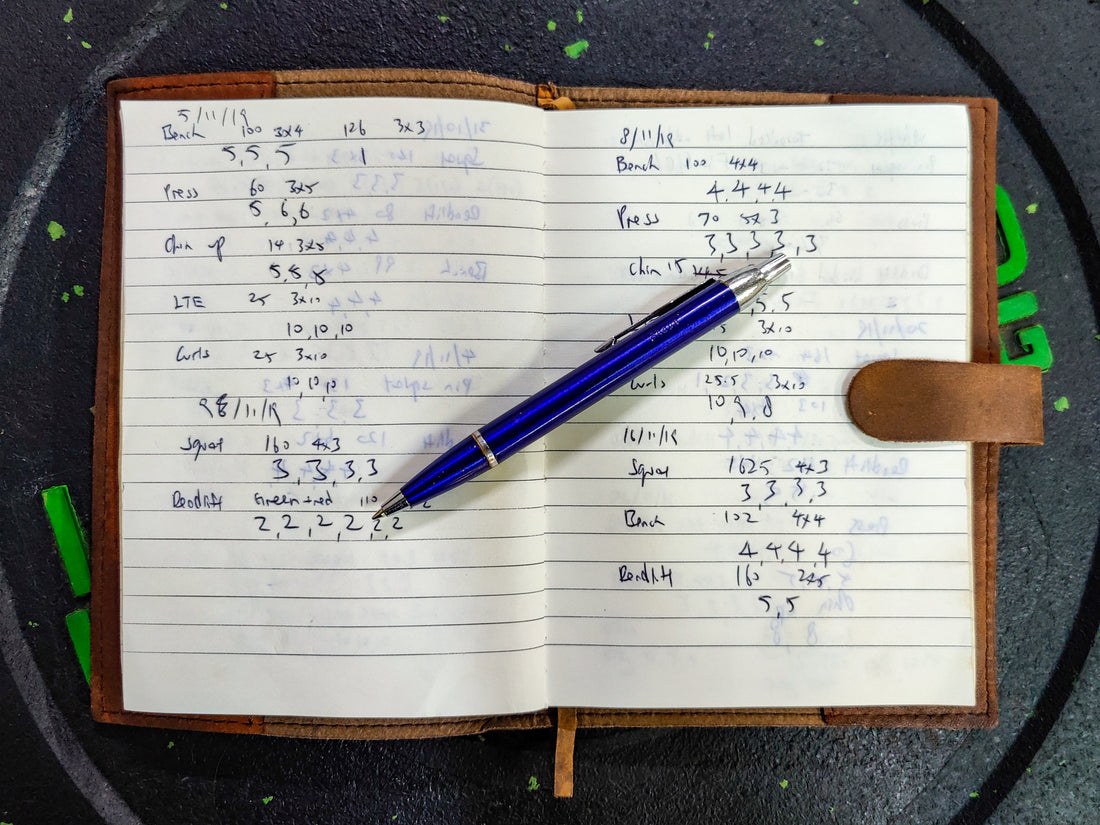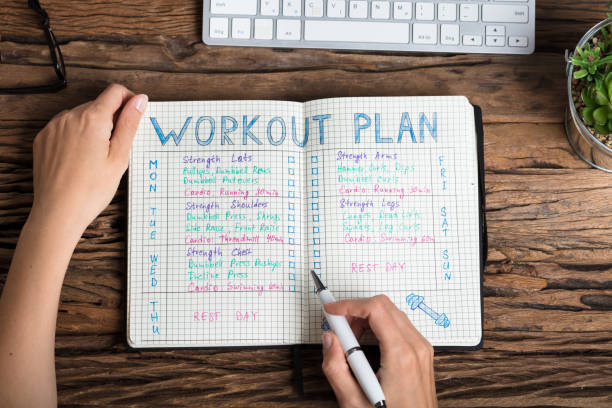
The Powerlifter's Logbook: Why and How to Track Your Training for Maximum Progress
In the age of advanced programming and online coaching, one of the most powerful tools for a powerlifter remains one of the simplest: the training log. Whether it's a worn-out notebook, a detailed spreadsheet, or a modern app, a powerlifting logbook is your personal data center. It transforms your training from a series of disconnected workouts into a measurable, analyzable journey. If you're not logging your training, you're guessing. If you're guessing, you're not optimizing your progress.

Why Logging is a Non-Negotiable Habit
Tracking your workouts provides immense benefits that go far beyond simply remembering what you did last week.
-
Ensures Progressive Overload: It is the only way to guarantee you are consistently applying the principle of progressive overload—the cornerstone of getting stronger. A log tells you exactly what you need to beat.
-
Provides Objective Data: Feelings can be deceptive. You might feel like you had a bad day, but the log might show you still hit a rep PR. It provides objective truth about your performance.
-
Identifies Trends and Plateaus: Over weeks and months, your log will reveal patterns. Is your squat stalling? Is your bench press volume too high? The data in your log holds the answers.
-
Builds Motivation and Confidence: Looking back at where you started and seeing how far you've come is an incredible confidence booster. It provides tangible proof that your hard work is paying off.
-
Informs Future Decisions: A detailed log is invaluable when planning your next training block or for your coach to analyze. It allows for intelligent, data-driven decisions rather than guesswork.
What to Track: Beyond Sets and Reps
A good workout log is more than just a list of exercises. To make it truly powerful, you need to track key variables.
The Essentials:
-
Date: The day of the workout.
-
Exercise: The specific movement performed (e.g., "Competition Stance Squat," not just "Squat").
-
Weight: The load on the bar.
-
Sets & Reps: The number of sets and repetitions performed for each weight.
The Game-Changers (The Data That Matters):
-
RPE (Rate of Perceived Exertion): After each top set, record your RPE on a scale of 1-10. This provides context to the numbers. A set of 5 at 100kg @ RPE 7 is a very different performance than the same set @ RPE 9. This is crucial for autoregulating your training.
-
Technique Notes: Jot down a quick note about how the lift felt. "Felt fast," "Hips shot up on the last rep," "Kept elbows tucked well." This qualitative data is priceless.
-
Videos: If you film your sets (which you should), include a link to the video (e.g., an unlisted YouTube link or an Instagram post) next to the set. This allows for later review by you or your coach.
-
Subjective Feelings: A simple 1-5 rating or short note on your sleep, nutrition, stress, and energy levels for the day can help explain performance fluctuations.

Tools of the Trade: Finding Your Logging Method
The best method for how to track workouts is the one you will use consistently.
-
The Classic Notebook:
-
Pros: Simple, tactile, requires no technology. Many of powerlifting's strongest legends have used nothing more than a simple pen and paper.
-
Cons: Can get messy, harder to analyze long-term data, and can be lost or damaged.
-
-
Spreadsheets (Google Sheets / Excel):
-
Pros: Infinitely customizable. You can create graphs, track volume, and analyze data. Resources like Lift Vault offer dozens of free, high-quality powerlifting spreadsheet templates.
-
Cons: Requires some initial setup and can be cumbersome to use on a phone in the middle of a workout.
-
-
Training Log Apps:
-
Pros: Designed specifically for lifting. Often include features like rest timers, plate calculators, and progress charts. Very convenient to use on a phone. Popular options include Hevy, Strong, and Jefit.
-
Cons: Can be less customizable than spreadsheets. Some of the best apps require a subscription.
-
How to Use Your Log to Get Stronger
-
Review Before You Lift: Before each session, look at your log from the previous week for that same workout. Know exactly what numbers you need to beat.
-
Conduct a Weekly Review: At the end of each week, spend 10 minutes looking over your log. Did you hit your RPE targets? Are you seeing consistent progress? Are there any red flags, like nagging pain?
-
Plan Your Next Block: When it's time to start a new training cycle, your log becomes your roadmap. You can see which exercises gave you the best results and identify the volume and intensity levels that worked best for you.
The training log is your secret weapon. It's your personal history, your data analyst, and your roadmap to the future. It holds you accountable, reveals the truth about your training, and empowers you to make smarter decisions. Stop guessing and start logging. The simple act of writing down your workouts consistently is one of the most impactful habits you can build on your journey to becoming the strongest version of yourself.
How do you log your training? Share your preferred method or any tips you have in the comments!








